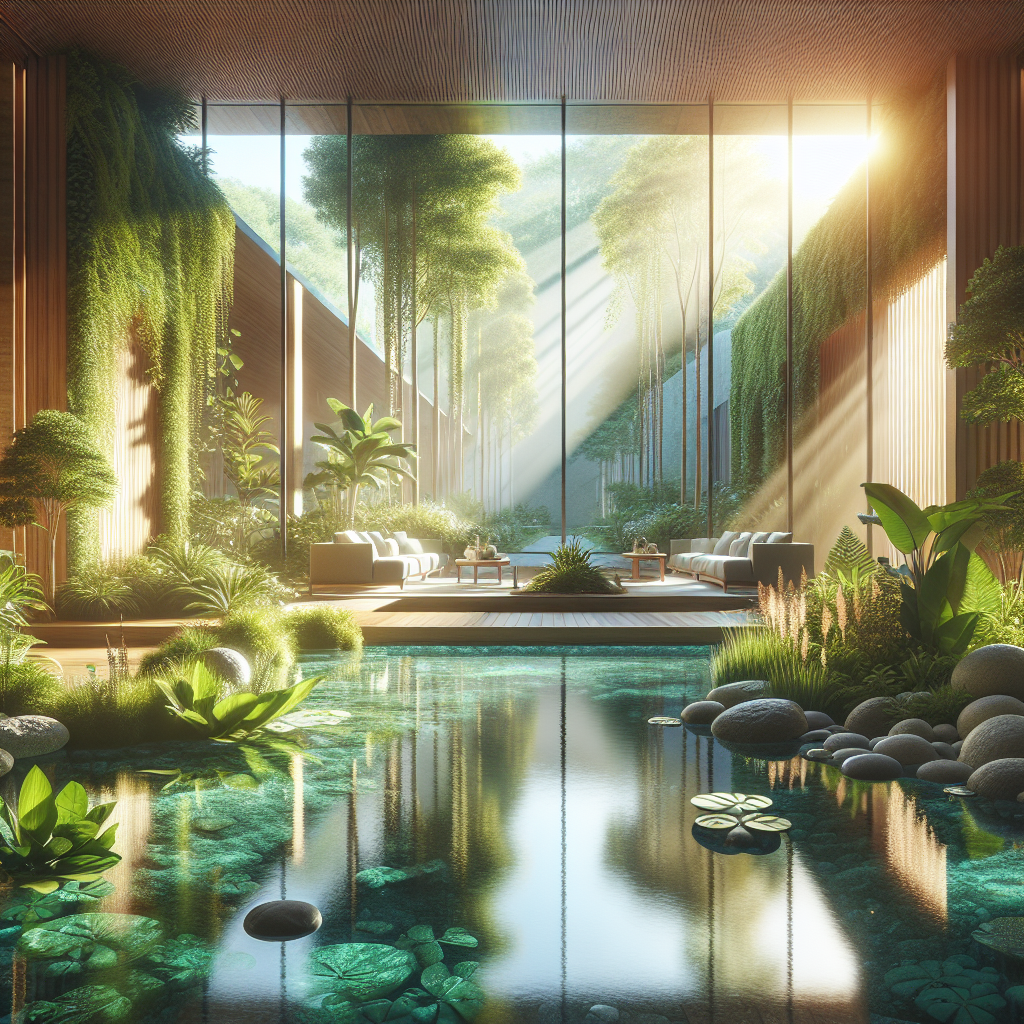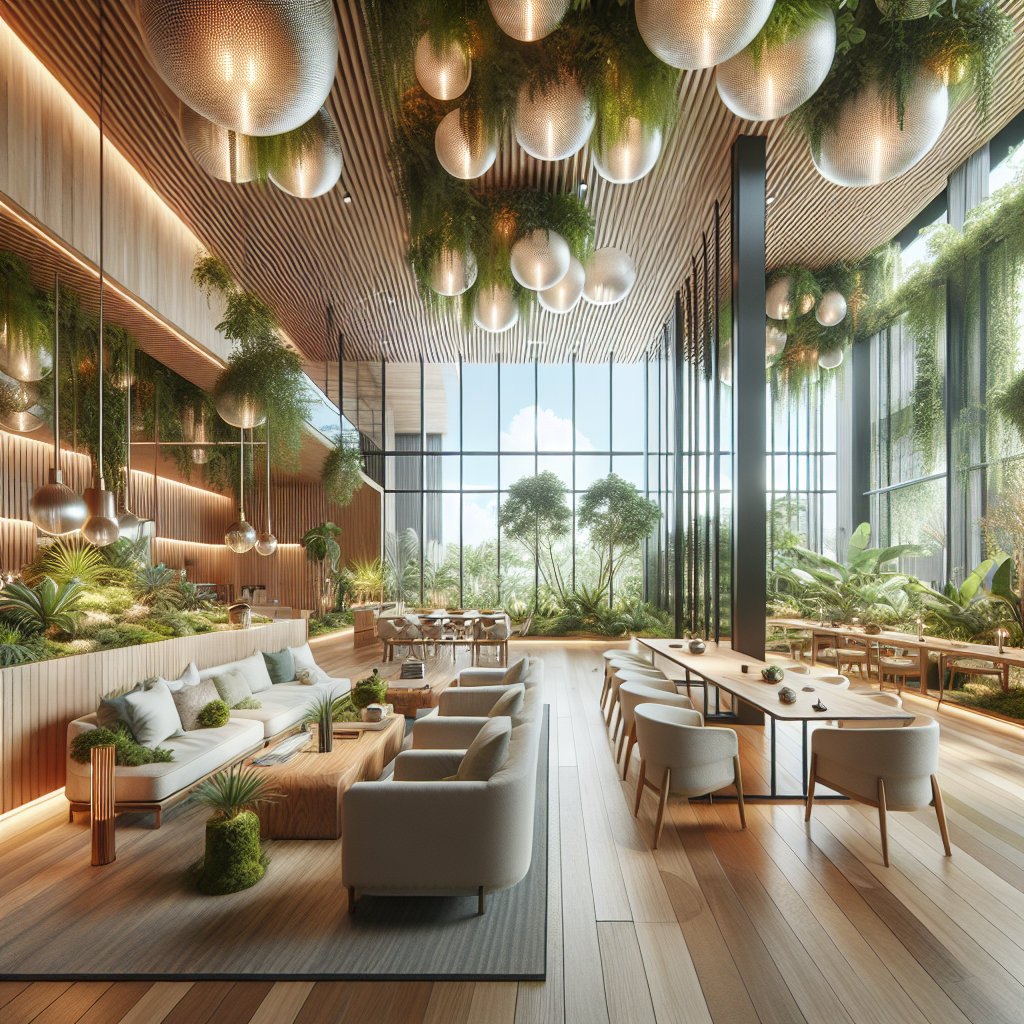Exploring the Fascinating World of Biophilic Design Paradigms: A Comprehensive Analysis from an Unexplored Perspective
- Shubham Mishra

- Sep 14, 2024
- 3 min read
In the realm of design, there exists a paradigm that transcends traditional boundaries, drawing inspiration from the very essence of nature itself. This paradigm, known as Biophilic Design, explores the innate connection between humans and the natural world, seeking to infuse our built environments with elements that evoke feelings of tranquility, vitality, and harmony. Today, we embark on a journey to delve into the depths of this captivating realm, shedding light on the principles, benefits, and applications of Biophilic Design from a fresh and unexplored perspective.
Unveiling the Essence of Biophilic Design
At its core, Biophilic Design aims to nurture our intrinsic affinity for nature by incorporating natural elements, patterns, and processes into architectural spaces. By seamlessly integrating greenery, natural light, and organic materials, designers create environments that not only mimic nature but also enhance our well-being. This holistic approach to design recognizes the profound impact nature has on our psychological and physiological health, making it a powerful tool in fostering human-centric spaces that resonate with our primal instincts.

The Seven Biophilic Design Patterns
To understand the intricacies of Biophilic Design, we must familiarize ourselves with the seven foundational patterns that serve as the framework for this design philosophy:
Biophilic Design Element : Incorporating direct or indirect elements of nature into the space.
Natural Analogues : Using forms, patterns, or textures found in nature to design elements.
Nature of the Space : Creating spaces that evoke the feeling of being in nature.
Natural Systems : Emulating natural ecosystems or processes in design.
Light and Space : Harnessing natural light and spatial configurations to enhance well-being.
Place-Based Relationships : Fostering connections between occupants and the local environment.
Evolved Human-Nature Relationships : Designing spaces that reflect the evolving relationship between humans and nature.

The Impact of Biophilic Design on Well-Being
Numerous studies have shown the significant benefits of Biophilic Design on human health and productivity. By reducing stress, enhancing cognitive function, and improving air quality, spaces infused with biophilic elements offer a sanctuary where individuals can thrive both mentally and physically. From increased creativity to faster recovery times, the positive effects of biophilic environments underscore the importance of reconnecting with nature in our urbanized world.
Embracing Biophilic Design in Practice
From sustainable office buildings to serene healthcare facilities, Biophilic Design has found its place in a myriad of architectural projects worldwide. By prioritizing human well-being and environmental sustainability, designers and architects are reshaping the future of built environments. Whether through living walls, natural ventilation systems, or daylight optimization strategies, the integration of biophilic elements continues to revolutionize the way we experience and interact with our surroundings.

A Call to Embrace Nature's Wisdom
As we reflect on the profound impact of Biophilic Design, we are reminded of our deep-rooted connection to the natural world. In a society where concrete jungles dominate the landscape, the principles of Biophilic Design serve as a beacon of hope, offering a path towards a more harmonious and sustainable future. Let us heed nature's wisdom and embrace the transformative power of Biophilic Design in shaping spaces that not only reflect our humanity but also honor the intricate web of life that sustains us all.
In conclusion, the realm of Biophilic Design beckons us to reimagine our relationship with the environment, weaving together the threads of nature and innovation to create spaces that nourish the body, mind, and soul. As we embark on this journey of exploration and discovery, may we find inspiration in the beauty and resilience of the natural world, allowing Biophilic Design to guide us towards a more holistic and regenerative future.




Comments